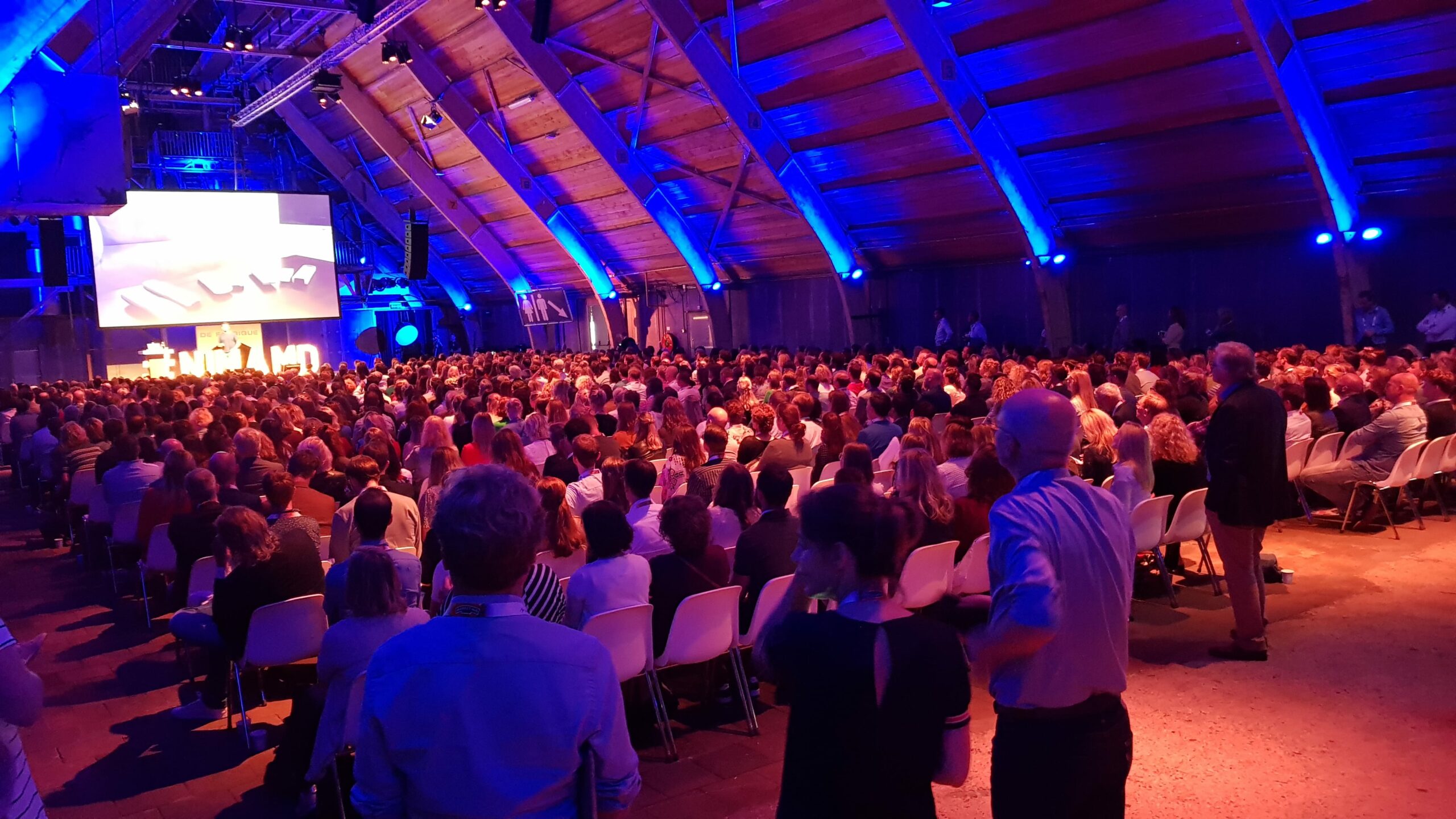‘Het is belangrijk om successen meetbaar te maken, zodat alle medewerkers zien en begrijpen wat er goed gaat en wat verbeterd kan worden. Zo wordt het een gedeelde verantwoordelijkheid, ook als je geen CEO bent!’

Lees meer over de NIMA Workshop: Customer Journey Mapping op 27 maart
Het inrichten en optimaliseren van de klantreis is één van de vakgebieden die in de afgelopen jaren als vanzelfsprekend richting ‘de marketing’ is gedreven. En daar is ook alle reden toe. Waar een gemiddelde marketingmanager zich tien vijftien jaar geleden nauwelijks vertoonde op afdelingen waar het ‘klantcontact’ werd ‘afgehandeld’ – meestal after sales – geldt CX tegenwoordig als een integraal onderdeel van het marketingvak. Maar wat ís een klantreis en heeft een klant zelf wel hetzelfde idee daarover als een bedrijf? Wie kan het? Kruipen in de huid van een klant, patronen herkennen en het zogenoemde ‘olifantenpad’ ontdekken. Want een reis beperkt zich niet tot de ‘touchpoints’ die je kunt meten.
CX-expert Carmen Phillips behoort al jaren tot de best beoordeelde NIMA-docenten en daar zal ongetwijfeld haar heldere stijl en kennis en jarenlange ervaring toe hebben bijgedragen, maar er is iets meer: Zelden ervaar je als marketingprofessional sterker dat het kwartje valt én je naar buiten loopt met een plan van aanpak waar je morgen mee aan de slag kunt, of je nu verantwoordelijk bent voor die hele klantreis van je bedrijf of niet. En één van die mindblowing insights is dat de verantwoordelijkheid voor een optimale klantreis waarschijnlijk niet goed is belegd. Wie gaat erover? Iederéén gaat erover. Dus niemand.
Hoewel, Carmen, dat wordt vaak gezegd. Er is niet één afdeling of discipline intern die een volledig beeld van de klant heeft en daarom werk je over kanalen en afdelingen heen, om zo tot een duidelijk beeld van de totale klantbeleving te komen. Is dit wel een marketing-ding?
‘Marketing heeft lange tijd het voortouw genomen in customer experience, maar het betrekken van de hele organisatie – en klanten – was niet altijd mogelijk of het belang werd onderschat. Als de hele organisatie niet betrokken is bij het proces, is het resultaat een theoretisch verhaal, en een plan zonder validatie en draagvlak. Dan ontstaan er allerlei interne discussies over welke waarheid de juiste is. Iedere afdeling heeft namelijk kennis en een eigen waarheid over de beleving van ‘de klant’. Oftewel nee, het is niet alleen een marketing-ding. Marketing danwel CX-afdelingen spelen wel een sleutelrol door te hierin te faciliteren zodat er focus ontstaat. Journey mapping helpt niet alleen om de klantervaring te begrijpen, het zorgt ook voor bewustwording en teambuilding.’
Consumenten kiezen vaak voor merken die oprecht ergens voor staan en beloften consequent nakomen, zo leg je uit in de omschrijving van je Workshop. Maar dat klinkt al bijna als ‘purposemarketing’. Kan het niet gewoon ‘snel, efficiënt en grondig’, dan ben je er toch qua CX?
‘Het is eigenlijk heel erg jammer dat we purposemarketing en “greenwashing” als vergelijkbare termen zijn gaan zien. Als je terug gaat naar de basis, gaat het erom dat je duidelijk bent over wat jou onderscheidt als merk, zowel richting klanten als richting medewerkers. Dat geldt ook voor intern – de verbinding tussen het individuele doel van mensen en het doel van de organisatie is een kritische succesfactor geworden. “Snel, efficiënt en grondig” zijn niet-onderscheidende waarden. Consumenten zoeken namelijk niet alleen naar producten die hun onmiddellijke behoeften vervullen, maar naar belevingen die passen bij hun identiteit en waarden. Dat gezegd hebbend, betekent dit niet dat functionele attributen genegeerd moeten worden. Ze vormen de basis waarop een sterke klantbeleving kan worden gebouwd. Echter, om echt onderscheidend te zijn, is het voor merken heel belangrijk om verder te gaan dan de basis en zich te richten op het bouwen van betekenisvolle relaties met hun klanten door middel van hun purpose en waarden. Maar het gaat om het dóen en niet over het hébben.’
Jij werkt voor het uitleggen van je methode en da’s heel praktisch: Customer Journey Mapping, maar wat ís dat? Een schema van de reis die een klant maakt?
‘Customer Journey Mapping is inderdaad een methode die praktisch gericht is. Het wordt gebruikt om de ervaringen en interacties van klanten met een merk of product in kaart te brengen. Het gaat verder dan alleen een schema van de ‘reis’ die een klant maakt: het is een proces waarbij je inleeft, stapt in de schoenen van de klant, en de belangrijkste touchpoints die een klant met een merk visueel weergeeft. Het stelt je in staat om beter begrijpen welke stappen klanten nemen, welke emoties ze ervaren, welke pijnpunten ze tegenkomen en waar er kansen liggen om de ervaring te verbeteren. Het stelt je in staat om gerichte verbeteringen door te voeren in lijn met het merk. Dus ja, het is inderdaad een schema van de klantreis, maar het omvat veel meer dan alleen dat; het is een strategisch instrument om de klantbeleving te optimaliseren. Met andere woorden, het visualiseren van een journey is stap één. Daarna moet je de journey gaan managen!’
Een lastigheid aan CX, is de breedte van het begrip is dat het vaak in verband wordt gebracht met meetbare touchpoints: daar waar de klant een digitaal spoor achterlaat wordt hij of zij zorgvuldig gevolgd, maar een heel deel van de klantreis speelt zich af in een analoge werkelijkheid: het gesprek aan de bar waardoor ik uiteindelijk voor een nieuw automerk kies, of bij mijn supermarkt blijf. Hoe voorkom je dat je té belangrijk gaat vinden wat je wél kunt meten?
‘Leuke vraag! Om te voorkomen dat we alleen maar kijken naar wat we kunnen meten, moeten we breder denken en ook letten op de dingen die niet zo makkelijk in cijfers zijn uit te drukken. Niet alles wat we kunnen meten is waardevol, en niet alles wat waardevol is, is meetbaar.’
Maar welke strategie volg je om te voorkomen dat je teveel belang hecht aan alleen het meetbare?
Er zijn er meerdere: Naast kwantitatieve data is het belangrijk om kwalitatieve inzichten te verzamelen. Dat kan door middel van diepte-interviews, klantenpanels, en feedbacksessies waar klanten hun ervaringen en belevingen in hun eigen woorden kunnen delen. Daarmee krijg je inzichten in de motivaties, emoties en percepties van klanten die niet altijd uit cijfers blijken. Kwalitatieve onderzoeken kunnen context geven aan kwalitatieve onderzoeken. Daarnaast is het van groot belang om medewerkers te betrekken: Medewerkers die direct contact hebben met klanten zijn een waardevolle bron van informatie. Zij kunnen inzichten delen over klantgedragingen en -voorkeuren die niet altijd uit data blijken. Het regelmatig verzamelen van die feedback kan helpen om een vollediger beeld van de customer journey te krijgen. Ga ook holistisch aan de slag: Maak customer journeys die zowel de digitale als de analoge touchpoints omvatten, dus omnichannel. Dit helpt om een volledig beeld te krijgen van de klantreis en om inzicht te krijgen in hoe verschillende touchpoints elkaar beïnvloeden. Focus op Emotionele Drivers: Erken dat beslissingen van mensen emotioneel en irrationeel zijn. Het onderzoeken van emotionele drivers helpt om een vollediger beeld van de klantreis te krijgen. En tenslotte belangrijk Experimenteer en Leer: Test nieuwe benaderingen om klantinzichten te verzamelen en te analyseren, en wees bereid om te leren van de resultaten. Dit kan helpen om nieuwe, minder voor de hand liggende aspecten van de klantreis te ontdekken.’
In de inleiding schreven we al dat CX de kant van marketing is opgedreven. Anderzijds lees en hoor je best veel geklaag over tekortkomingen in customer experience, ook waar het de inzet van geautomatiseerde CX betreft. Het lijkt ook niet minder te worden. Heeft marketing een probleem?
‘Haha, ik denk dat focus hier weer het sleutelwoord is. Wanneer CX-initiatieven gefragmenteerd worden aangepakt, bijvoorbeeld door te veel nadruk te leggen op digitale innovaties zonder de menselijke touch of de integratie met offline ervaringen, kunnen klanten zich onbegrepen en ondergewaardeerd voelen. Het echte probleem ligt dus in het vinden van de juiste balans en integratie tussen technologie, menselijke interactie, en de algehele merkstrategie. Dit vereist een holistische benadering van CX waarbij niet alleen marketing, maar alle afdelingen binnen een organisatie betrokken zijn. Het gaat erom dat je consistent de merkbelofte waarmaakt, zowel online als offline, en zorgt voor een naadloze, positieve ervaring voor de klant op elk punt van hun reis. In essentie heeft marketing misschien een uitdaging, maar het is een die opgelost kan worden met een meer faciliterende rol, en door een geïntegreerde, klantgerichte benadering van CX te hanteren, waarbij de hele organisatie betrokken is bij het leveren van een uitzonderlijke klantbeleving.’
Opmerkelijke bijkomstigheid is dat deze verantwoordelijkheid zo sterk óver het hele bedrijf heen ligt waar het gaat om een consistente klantbeleving, een optimale klantreis. Dat lijkt een recipe for failure want hoe begin je? Hoe krijg je het bedrijf ervan overtuigd dat het een verantwoordelijkheid is voor het héle bedrijf en één zwakke schakel het verschil kan maken tussen een tevreden en ontevreden klant? Je bent tenslotte geen CEO.
‘Om het hele bedrijf ervan te overtuigen dat klantbeleving en klantreis ieders verantwoordelijkheid zijn, is het cruciaal om te starten met het creëren van bewustzijn over het belang ervan. Het is belangrijk om leiders te vinden die het belang van een geweldige klantbeleving zien en bereid zijn dit uit te dragen. Door successen zichtbaar te maken en te delen, kun je anderen binnen het bedrijf inspireren. Training en educatie kunnen helpen iedereen te leren hoe hun rol de klantbeleving beïnvloedt en verbetert. Het is natuurlijk belangrijk om successen meetbaar te maken, zodat alle medewerkers zien en begrijpen wat er goed gaat en wat verbeterd kan worden. Zo wordt het een gedeelde verantwoordelijkheid, ook als je geen CEO bent!’
Je bent al jaren een vaste kracht in het korte-trainingenprogramma van NIMA en behaalt ook al jaren hoge cijfers van mensen die deelnemen. Verwachtingen worden overtroffen. Wat voor soort mensen tref jij aan in je klas? Is er een soort profiel?
‘Eigenlijk wel en ook weer niet. Het zijn wel mensen die leergierig zijn en willen ontdekken hoe je een organisatie een stapje verder kunt helpen. Zij willen dus niet alleen theorie willen snappen maar die methoden in de praktijk écht toepassen – die impact willen hebben. De groepen zijn diverse, wat altijd leidt tot boeiende gesprekken. De kunst is om technieken en modellen aan te reiken en om de praktijk te linken. Vooraf doe ik altijd intakes zodat mensen vooraf weten wat ze kunnen verwachten, en hun leerdoelen en uitdagingen kunnen delen. Dat zorgt er ook voor dat mensen goed voorbereid komen naar een workshop.’
Lees meer over de NIMA Workshop: Customer Journey Mapping op 27 maart







